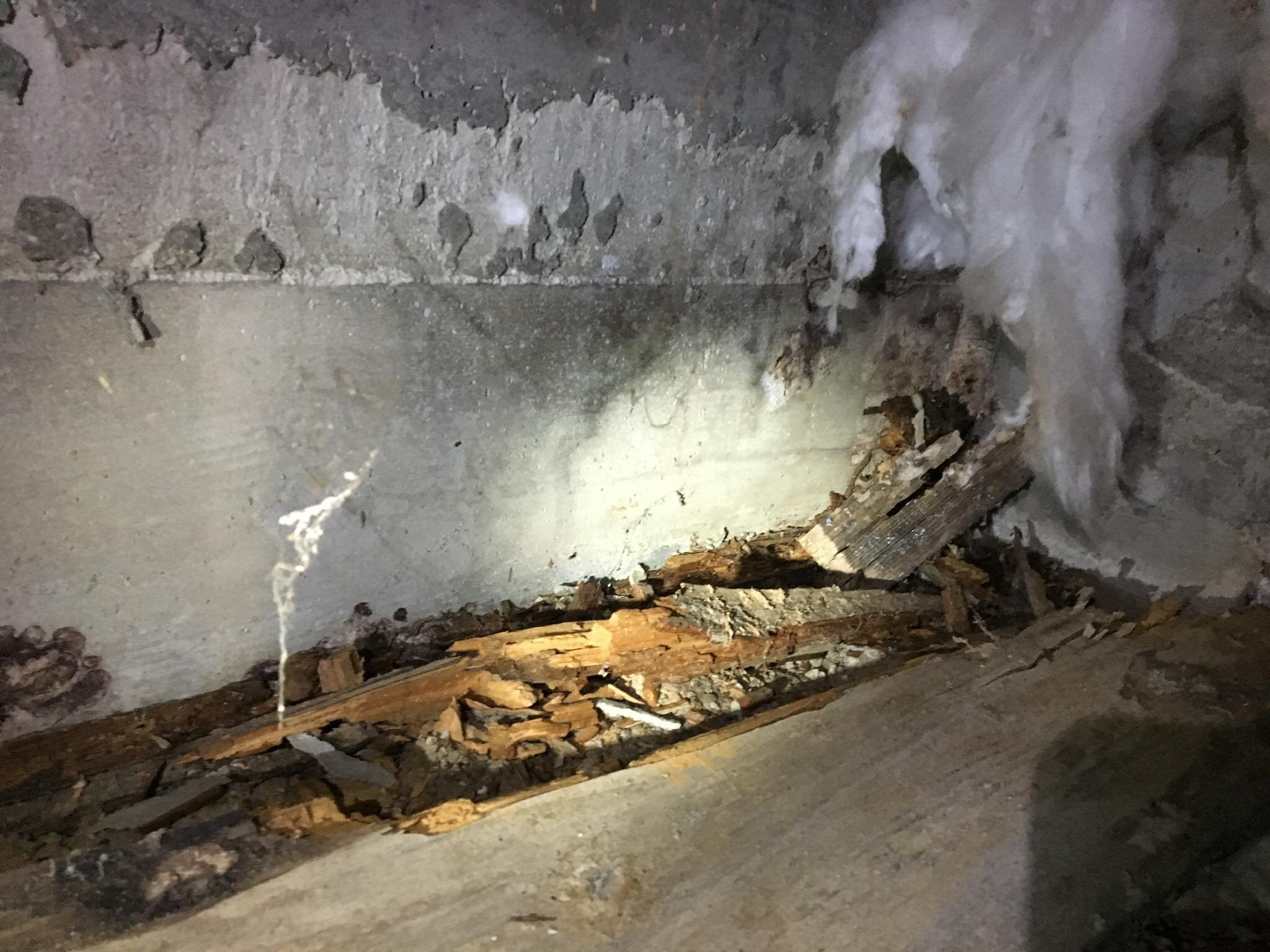Western subterranean termite populations reach plague-level proportions in many urban and suburban areas of southern California, and this species is often recognized as the most destructive termite in the state next to the desert subterranean termite. Unlike damage inflicted by the multiple drywood termite species in southern California, subterranean termites access structural wood in homes through “shelter tubes” that protrude from the ground. Worker termites construct these tubes with a hardening mixture of soil, bits of wood, saliva and fecal matter. Amazingly, these tubes are narrow enough to fit through foundation cracks where they connect to structural lumber indoors.
Due to their soil habitat, subterranean termite infestations are usually found in structural wood located on the ground level of homes. Structural wood located around plumbing is particularly vulnerable to subterranean termite attacks due to the moisture emitted from pipes and leaks that originate from sinks, tubs and laundry facilities immediately above substructure plumbing. Also, inadequate rainwater diversion caused by clogged gutters, and inward sloping ground causes water to flood into crawl spaces, contributing to moisture buildup around the most important structural wood components in a house.
Subterranean termites must maintain a moist habitat in order to survive, which makes damp and decayed wood sources particularly attractive to the destructive insect pests. Condensation regularly forms on the exterior of pipes, which can cause nearby structural lumber to become saturated with moisture overtime. Subterranean termite infestations are commonly found in structural wood located beneath dishwashers, sinks, tubs and clothes washers, as the occasional formation of puddles on the ground floor around these sites can see water trickle down to wood subframing.
While all homes in southern California should be professionally inspected for termites at least once per year, homeowners can also inspect their crawl space for moisture buildup, leaks and termite damage. The ideal relative humidity level in a crawl space is around 55 percent, but levels exceeding 70 percent should be corrected with a dehumidifier. Moisture meters are widely available and reasonably priced. Plastic sheeting can also be spread over crawl space soil in order to prevent moisture from rising and accumulating within substructural wood.
Have you ever inspected your crawl space for termite damage?


